Spatiotemporal Evolution and Driving Forces of Tourism Economic Resilience in Chinese Provinces
Abstract
:1. Introduction
2. Overview, Research Methods, and Data Sources
2.1. Overview and Graphical Abstract
2.2. Indicator System
2.3. Research Methods
- (1)
- Moran’s I Index
- (2)
- Kernel Density Estimation (KDE)
- (3)
- Geographical Detector
2.4. Data Sources
3. Evaluation of Tourism Economic Resilience
3.1. Model Construction
3.2. Tourism Economic Resilience Evaluation Results Analysis
- In 2021, only Jiangsu and Guangdong provinces reached a high resilience state, with most provinces and cities in relatively low to low resilience states. Relatively low resilience states were mainly distributed in northeast and southern China, while low resilience states were primarily in the Qinghai–Tibet and northwest regions.
- In 2017, most provinces and cities showed an upward trend in tourism economic resilience. The Yangtze River Delta, one of the regions with economic vitality and development potential, saw positive developments in tourism economic resilience, becoming the most densely populated high-resilience region in China.
- By the end of the study period, Shandong, Jiangsu, Zhejiang, Guangdong, and Sichuan provinces reached high tourism economic resilience states with strong adaptability and recovery capabilities. Most provinces and cities were above medium tourism economic resilience levels, with significant differences between provinces and cities. Eastern China formed a concentrated area of high tourism economic resilience.
4. Spatiotemporal Evolution of Provincial Tourism Economic Systems in China
4.1. Temporal Evolution Analysis
- Distribution Location: The centers of resistance resilience and overall tourism system resilience have shifted to the right, indicating an upward trend in these areas. In contrast, the center of development resilience has moved to the left, suggesting a slight decline during the study period. Reshaping resilience and recovery resilience remained stable throughout the study period;
- Distribution Extensibility: The density function curves for reshaping resilience and recovery resilience exhibit a rightward tail, indicating significant regional differences in tourism economic resilience across China;
- Polarization Phenomenon: Each type of resilience (development, resistance, recovery, and overall tourism system) presents a single peak, indicating the absence of regional polarization. The transformation from broad to sharp peaks, with a decrease in the left-end area, suggests an overall increasing trend in tourism economic resilience across most provinces and cities. Additionally, there is a clear differentiation between high-value and low-value areas, reflecting significant regional economic disparities in China’s tourism economic resilience.
4.2. Spatial Evolution Analysis
4.2.1. Moran’s I Index
4.2.2. Cold and Hot Spot Analysis
5. Analysis of Driving Factors for the Spatiotemporal Evolution of Provincial Tourism Economic Resilience in China
5.1. Analysis of Driving Factors
5.2. Results Analysis
6. Conclusions and Discussion
- Temporal Changes: Most provinces in China exhibited varying degrees of improvement in tourism economic resilience, with different degrees of change in the four dimensions of resilience. Resistance resilience and tourism system resilience showed an upward trend, development resilience exhibited a declining trend, and restructuring resilience and recovery resilience remained stable throughout the study period. Among the four dimensions, priority should be given to enhancing development resilience to ensure the comprehensive development of China’s tourism economic resilience;
- Spatial Pattern: Significant differences in tourism economic resilience were observed between provinces, with a trend of the east being better than the west and the south being better than the north. Particularly, the tourism economic resilience gap between eastern coastal cities and western inland cities was prominent, indicating diverse spatial patterns and ample room for development;
- Regional Differences: Although no polarization phenomenon was observed, there was a clear differentiation between high-value and low-value areas, indicating significant regional economic disparities in China’s tourism economic resilience. Efforts are needed to narrow regional differences and promote balanced regional development to enhance the overall resilience of the tourism economic system;
- Regional Connections: China’s tourism economic resilience exhibited regional connectivity, with uneven distribution of hot and cold spots. Hot spots were concentrated in the six southeastern provinces, emphasizing the need to strengthen regional cooperation and expand high-level resilience areas;
- Driving Factors: Factors such as per capita railway mileage, domestic tourism revenue, the number of travel agencies, and the number of employees in accommodation and catering had significant impacts on China’s tourism economic resilience. In the context of rapid tourism economic development, improving infrastructure construction and enhancing the comprehensive strength of the tourism industry are key to enhancing tourism economic resilience. Additionally, due to the different dominant driving factors across provinces, decisions should be made based on the dominant factors, the contribution levels of different driving factors, and their interactions to enhance the transformation and innovation capabilities of tourism products and services, meeting the growing tourism demands of the people in the new era.
Author Contributions
Funding
Institutional Review Board Statement
Informed Consent Statement
Data Availability Statement
Conflicts of Interest
References
- Holling, C.S. Engineering resilience versus ecological resilience. Eng. Within Ecol. Constraints 1996, 6, 21–75. [Google Scholar]
- Holling, C.S. Resilience and stability of ecological systems. Annu. Rev. Ecol. Syst. 1973, 4, 1–23. [Google Scholar] [CrossRef]
- Masten, A.S.; Best, K.M.; Garmezy, N. Resilience and development: Contributions From the study of children who overcame adversity. Dev. Psychopathol. 1990, 2, 425–444. [Google Scholar] [CrossRef]
- Dogru, T.; Marchio, E.A.; Bulut, U.; Suess, C. Climate change: Vulnerability and resilience of tourism and the entire economy. Tour. Manag. 2019, 72, 292–305. [Google Scholar] [CrossRef]
- Meerow, S.; Newell, J.P.; Stults, M. Defining urban resilience: A review. Landsc. Urban Plan. 2016, 147, 38–39. [Google Scholar] [CrossRef]
- Timmerman. The concept of resilience revisited. Disasters 1981, 30, 433–450. [Google Scholar]
- Yang, E.; Kim, J.; Pennington-Gray, L.; Ash, K. Does tourism matter in measuring community resilience? Ann. Tour. Res. 2021, 89, 103–222. [Google Scholar] [CrossRef]
- Bin, T.S. Measuring community resilience: A critical analysis of a policy-oriented indicator tool. Environ. Sustain. Indic. 2021, 12, 100142. [Google Scholar]
- Filimonau, V.; Coteau, D.D. Tourism resilience in the context of integrated destination and disaster management (DM2). Int. J. Tour. Res. 2020, 22, 202–222. [Google Scholar] [CrossRef]
- Luthar, S.S.; Cicchetti, D.; Becker, B. The construct of resilience: A critical evolution and guidelines for future work. Child Dev. 2000, 7, 543–562. [Google Scholar] [CrossRef]
- Zheng, P.; Li, J.; Wang, J.; Cheng, H.; Wang, Q. The coupling coordination of relationships between tourism destination image and product country image. Int. J. Tour. Res. 2021, 23, 858–870. [Google Scholar] [CrossRef]
- Sheppard, V.A.; Williams, P.W. Factors that strengthen tourism resort resilience. J. Hosp. Tour. Manag. 2016, 28, 20–30. [Google Scholar] [CrossRef]
- Cellini, R.; Cuccia, T. The Economic Resilience of Tourism Industry in Italy: What the ‘Great Recession’ data Show. Tour. Manag. Perspect. 2015, 16, 346–356. [Google Scholar] [CrossRef]
- Susanne, B. Developing a Framework for Assessing Resilience of Tourism Sub-systems to Climatic Factors. Ann. Tour. Res. 2013, 43, 506–528. [Google Scholar]
- Hill, E. Economic Shocks and Regional Economic Resilience. Urban Reg. Policy Its Eff. 2018, 4, 23–35. [Google Scholar]
- Wong, E.P.; de Lacy, T.; Jiang, M. Climate change adaptation in tourism in the South Pacific -Potential contribution of public–private partnerships. Tour. Manag. Perspect. 2012, 4, 136–144. [Google Scholar] [CrossRef]
- Sovacool, B.K. Perceptions of climate change risks and resilient island planning in the Maldives. Mitig. Adapt. Strateg. Glob. Change 2012, 17, 731–752. [Google Scholar] [CrossRef]
- Calgaro, E.; Dominey-Howes, D.; Lloyd, K. Application of the Destination Sustainability Framework to explore the drivers of vulnerability and resilience in Thailand following the 2004 Indian Ocean Tsunami. J. Sustain. Tour. 2014, 22, 361–383. [Google Scholar] [CrossRef]
- Cochrane, J. The Sphere of Tourism Resilience. Tour. Recreat. Res. 2015, 35, 173–185. [Google Scholar] [CrossRef]
- Becken, S.; Mahon, R.; Rennie, H.G.; Shakeela, A. The tourism disaster vulnerability framework: An application to tourism in small island destinations. Nat. Hazards 2014, 71, 955–972. [Google Scholar] [CrossRef]
- Lew, A.A. Scale, change and resilience in community tourism planning. Tour. Geogr. 2016, 38, 1635–1642. [Google Scholar] [CrossRef]
- Holladay, P.J.; Powell, R.B. Resident perceptions of social–ecological resilience and the sustainability of community-based tourism development in the Commonwealth of Dominica. J. Sustain. Tour. 2013, 21, 1188–1211. [Google Scholar] [CrossRef]
- Amir, A.F.; Abd Ghapar, A.; Jamal, S.A.; Ahmad, K.N. Sustainable Tourism Development: A Study on Community Resilience for Rural Tourism in Malaysia. Procedia-Soc. Behav. Sci. 2015, 168, 116–122. [Google Scholar] [CrossRef]
- Yang, Y.; Fik, T. Spatial effects in regional tourism growth. Ann. Tour. Res. 2014, 46, 144–162. [Google Scholar] [CrossRef]
- Li, H.; Wang, M.; Liu, Z. Measurement and Analysis of Regional Economic Resilience in China—Analysis based on shift share decomposition method. Price Theory Pract. 2024, 2, 1–5. [Google Scholar]
- Zhang, H.; Zhang, W.; Chen, S.; Yang, D.; Tian, Z. Construction of a resilience evaluation system for near-shore tourism islands and research on the influence mechanism of spatial elements. Mar. Sci. Bull. 2024, 4, 1–12. [Google Scholar]
- Wang, C.; Zhang, A.; Hu, M. Spatio-temporal Pattern and Obstacle Factors of Tourism Industry Ecosystem Resilience in the Yangtze River Delta. Areal Res. Dev. 2023, 42, 82–88. [Google Scholar]
- Chen, H.; Cai, S. Evaluation and Spatial-temporal Evolution of Regional Digital Innovation Ecosystem Resilience. Stat. Decis. 2023, 39, 51–55. [Google Scholar]
- Tian, G.; Miao, C.; Hu, Z.; Yang, D.; Hu, S. Research Progress of Regional Economic Resilience: Conceptualization, Measurement Methods and Influencing Factors. Hum. Geogr. 2023, 38, 1–8. [Google Scholar]
- Wu, B.; Chen, A. Framework of the evaluation model resilient cities. Sci. Technol. Rev. 2018, 36, 94–99. [Google Scholar]
- Xiu, C.; Wei, Y.; Wang, Q. Evaluation of urban resilience of Dalian city based on the perspective of “Size-Density-Morphology”. Acta Geogr. Sin. 2018, 73, 2315–2328. [Google Scholar]
- Zhang, M.; Feng, X. Comprehensive evaluation of urban toughness in China. Urban Probl. 2018, 27–36. [Google Scholar]
- Zhang, M.D.; Li, W.L. Spatial Difference and Convergence of Urban Resilience Level in Northeast China. J. Ind. Technol. Econ. 2020, 39, 3–12. [Google Scholar]
- Bai, L.; Xiu, C.; Feng, X.; Mei, D.W.; Wei, Z. A comprehensive assessment of urban resilience and its spatial differentiation in China. World Reg. Stud. 2019, 28, 77–87. [Google Scholar]
- Ding, J.J.; Wang, Z.; Liu, Y.H.; Yu, F. Measurement of economic resilience of contiguous poverty-stricken areas in China and influencing factor analysis. Prog. Geogr. 2020, 39, 924–937. [Google Scholar] [CrossRef]
- Li, X.; Li, L.; Zhu, Y. Study on the Resilience Evaluation of Resilient City. J. Eng. Manag. 2021, 35, 48–52. [Google Scholar]
- Xu, Y.Y.; Wang, C. Influencing factors of regional economic resilience in the 2008 financial crisis: A case study of Zhejiang and Jiangsu Provinces. Prog. Geogr. 2017, 36, 986–994. [Google Scholar]
- Peng, R.X.; Liu, T.; Cao, G.Z. Spatial pattern of urban economic resilience in eastern coastal China and industrial explanation. Geogr. Res. 2021, 40, 1732–1748. [Google Scholar]
- Xu, Q.; Zhao, R.; Zhang, Z. Spatial Pattern of Economic Resilience in Northeast China. Econ. Rev. J. 2023, 52–62. [Google Scholar]
- Qi, X.; Zhang, J.S.; Xu, W.X. A Study on the Evaluation of the Development of County Economic Resilience in Zhejiang Province. Zhejiang Soc. Sci. 2019, 5, 40–46+156. [Google Scholar]
- Chen, Y.L.; Yang, X.J. Tourism social-ecological systems and resilience research. J. Arid Land Resour. Environ. 2011, 25, 205–211. [Google Scholar]
- Chen, Y.L.; Yang, X.J. The resilience of Tibet tourism social-ecological systems. J. Northwest Univ. (Nat. Sci. Ed.) 2012, 42, 827–832. [Google Scholar]
- Wang, Q.; Lu, L.; Yang, X.Z. Study on measurement and impact mechanism of socio-ecological system resilience in Qiandao Lake. Acta Geogr. Sin. 2015, 70, 779–795. [Google Scholar]
- Wang, Q.; Lu, L.; Yang, X. Comparative Analysis of the Resilience of the Socio-ecological Subsystems of Tourist Destinations: A Case Study of Chun’an County. Tour. Trib. 2016, 31, 116–126. [Google Scholar]
- Guo, Y.; Zhang, J.; Zhang, Y. Tourism Community Resilience: Origin, Progress and Prospects. Tour. Trib. 2015, 30, 85–96. [Google Scholar]
- Guo, Y.; Zhang, J.; Zhang, Y. Influencing factors and mechanism of community resilience in tourism destinations. Geogr. Res. 2018, 37, 133–144. [Google Scholar]
- Wang, Q.; Zhao, L.; Yu, W.; Jia, J.Q. Spatial-Temporal Evolution Characteristics and Influencing Factors of Resilience of Tourism Economic System in China. Geogr. Geo-Inf. Sci. 2020, 36, 113–118. [Google Scholar]
- Pang, D.; Zhao, L.; Yu, W. Resilience measurement and obstacle factors of tourism economy in Shandong province. Resour. Ind. 2021, 23, 50–59. [Google Scholar]
- Liu, X.; Fang, H. Exploration on Ancient Village Tourism Development Path Based on the Perspective of Resilience. Urban. Archit. 2021, 18, 19–23. [Google Scholar]
- Zhu, Y.Y.; Wang, Z.W.; Gu, J.; Yu, R.L. The spatial optimization of red tourism resources utilization based on the resilience of “ruralism-ecology” system: A case study of Dabie Mountains Old Revolutionary Base Area. J. Nat. Resour. 2021, 36, 1700–1717. [Google Scholar] [CrossRef]
- Xu, K.; Wu, Y.; Yan, X.; Liu, X. Analysis on Evaluation Index of Tourism Economic Resilience under the Impact of Epidemic Situation. Tour. Today 2021, 19, 62–63+91. [Google Scholar]
- Pei, L.X.; Zhi, Z.P.; Zhan, Z.J.; Jian, Z.X. Perspectives on Tourism Regional Resilience Research in the Post-COVID-19 Era. Mod. Urban Res. 2021, 5, 19–26. [Google Scholar]
- Li, X. Resilience of Tourism Enterprises and Mechanism under the Impact of COVID-19: A Case Study of CTRIP. Master’s Thesis, Beijing International Studies University, Beijing, China, 2021. [Google Scholar]
- Hou, J. A study on resilient development of tourism industry under the influence of public health emergency. J. Wuxi Vocat. Inst. Commer. 2021, 21, 67–75. [Google Scholar]
- Feng, L.; Guo, J.; Liu, Y. Research Methodology for Tourism Destination Resilience and Analysis of Its Spatiotemporal Dynamics in the Post-epidemic Period. J. Resour. Ecol. 2021, 12, 682–692. [Google Scholar]
- Li, S. Research on the Measure and Countermeasures of Xinjiang Tourism Economy Resilience Level. Master’s Thesis, University of Finance, Xinjiang, China, 2022. [Google Scholar]
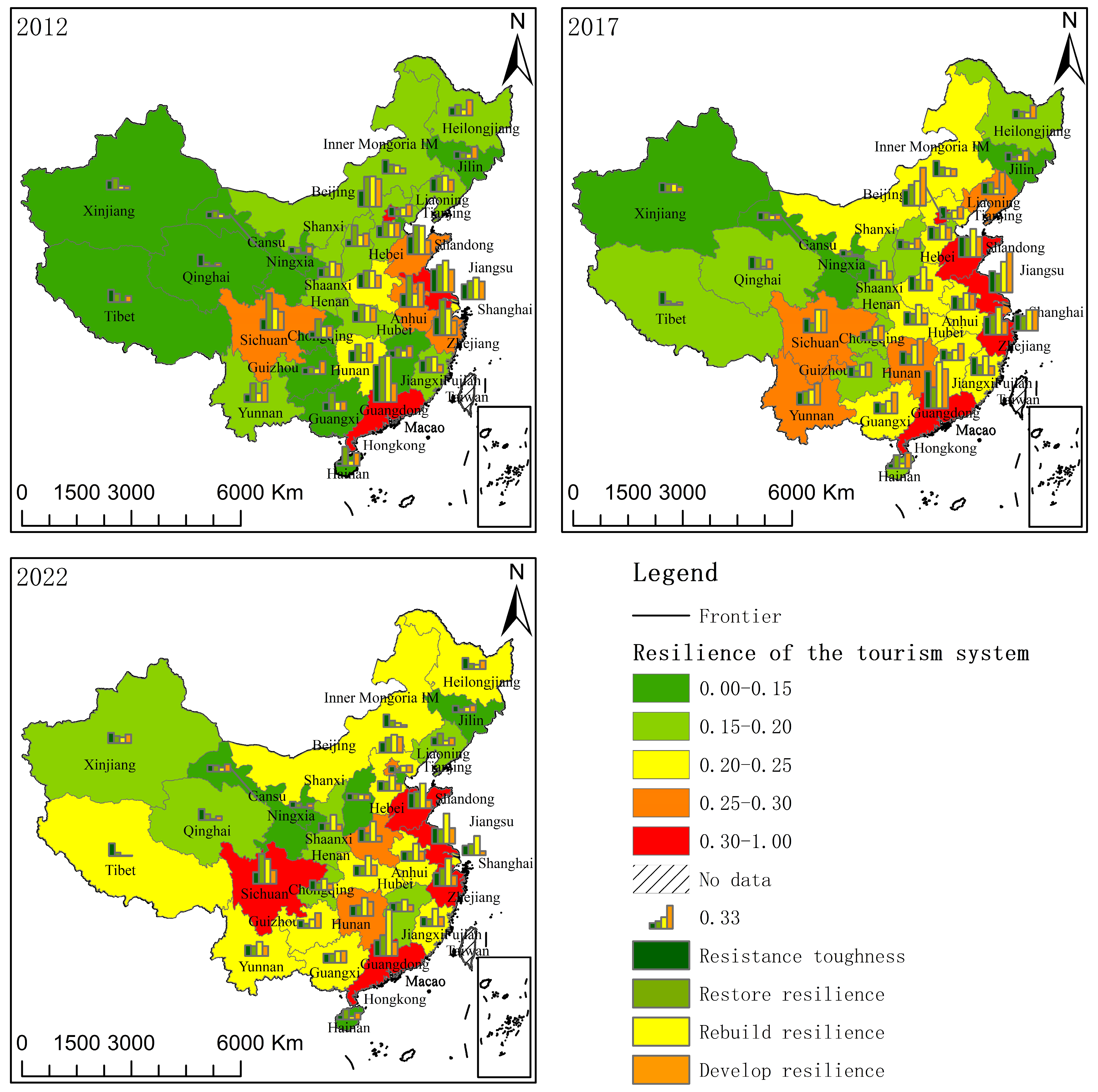

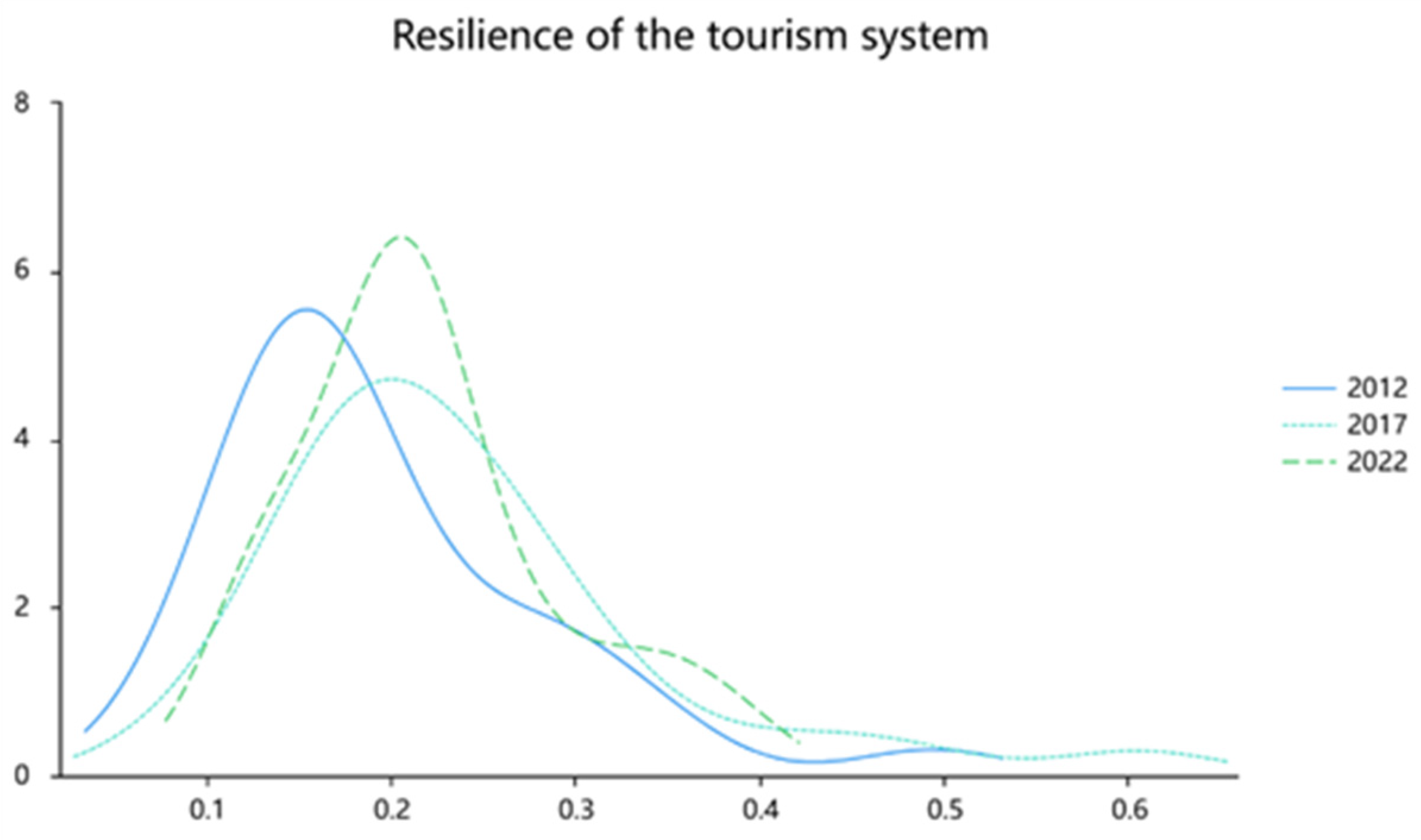
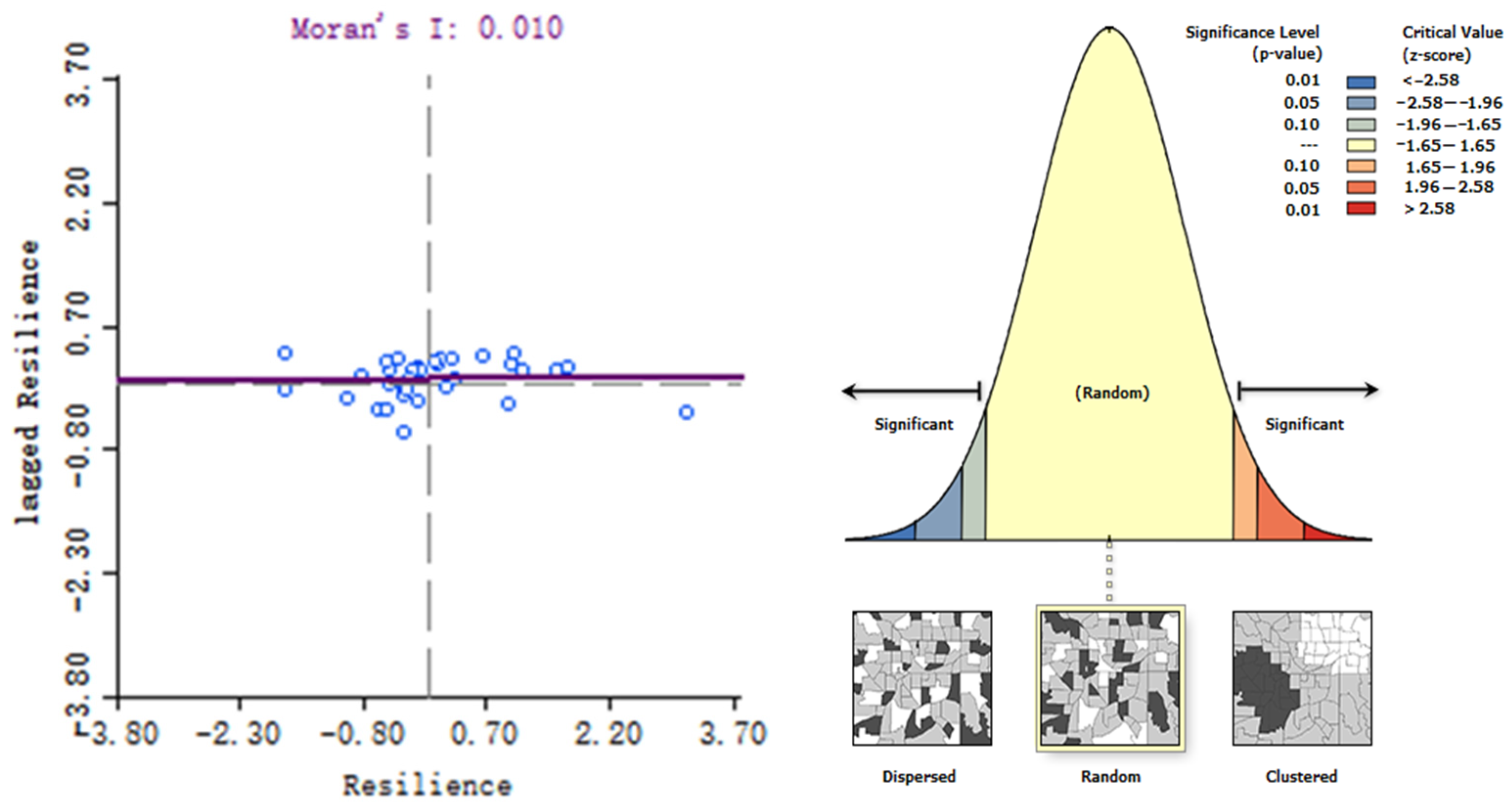

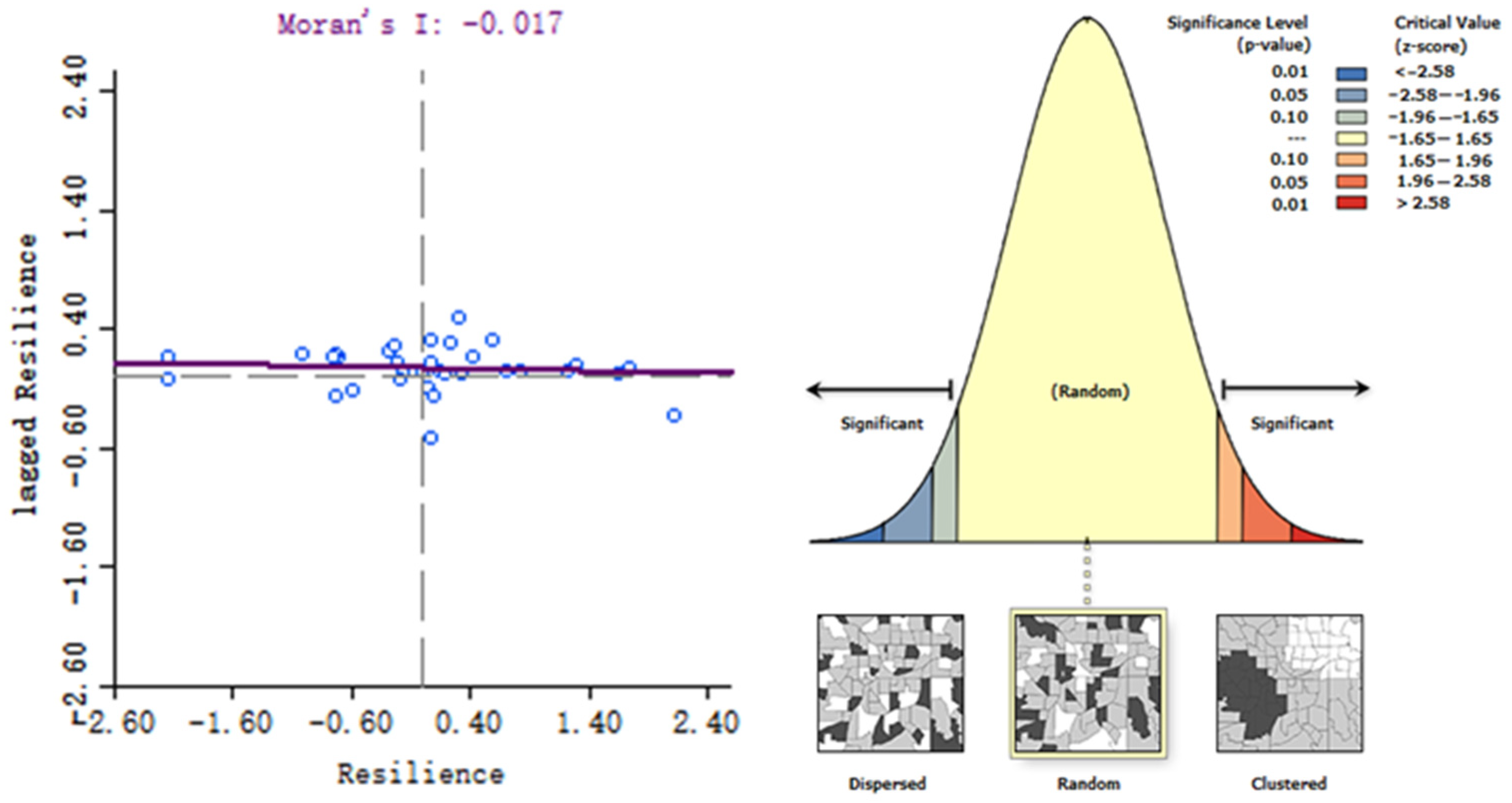

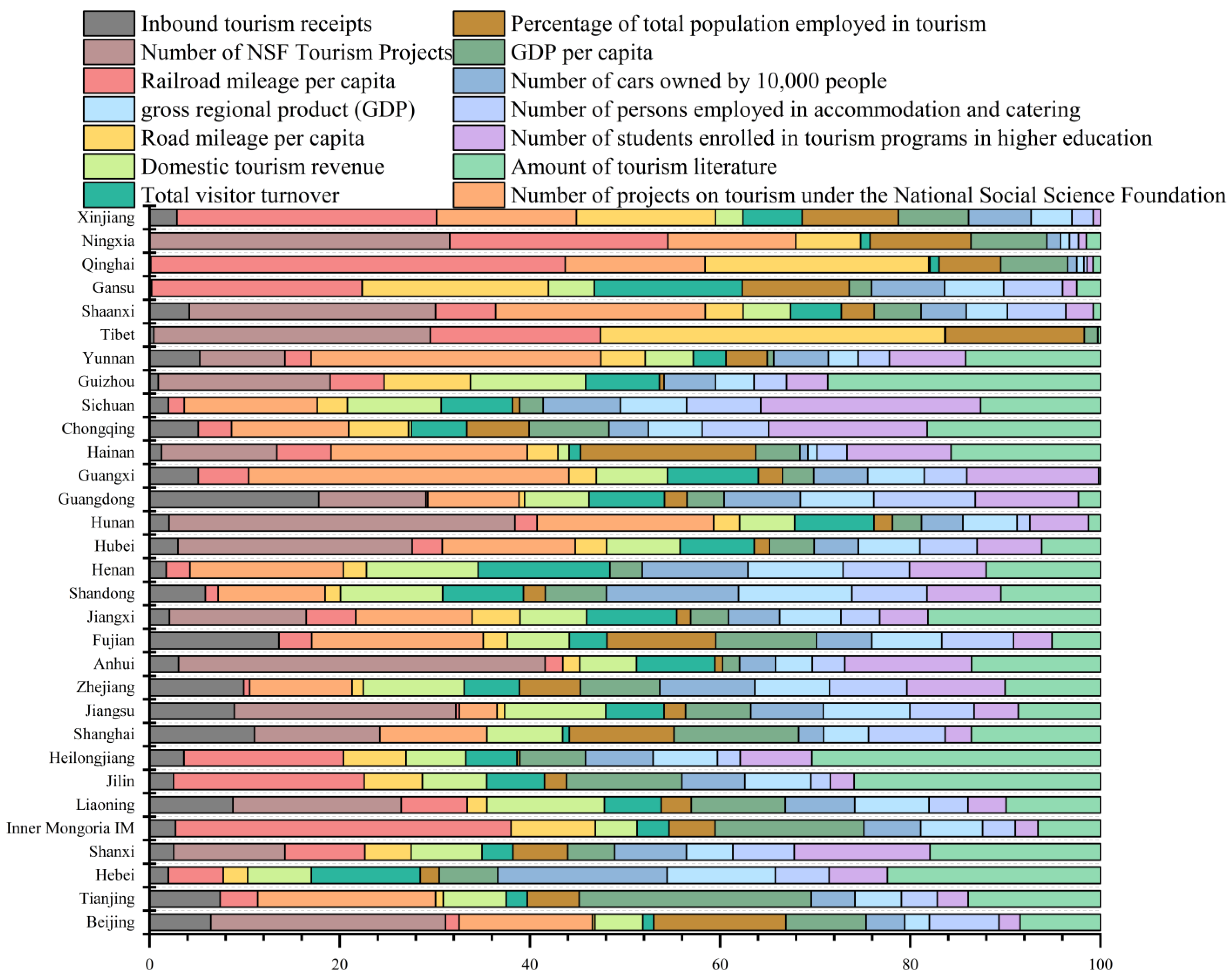
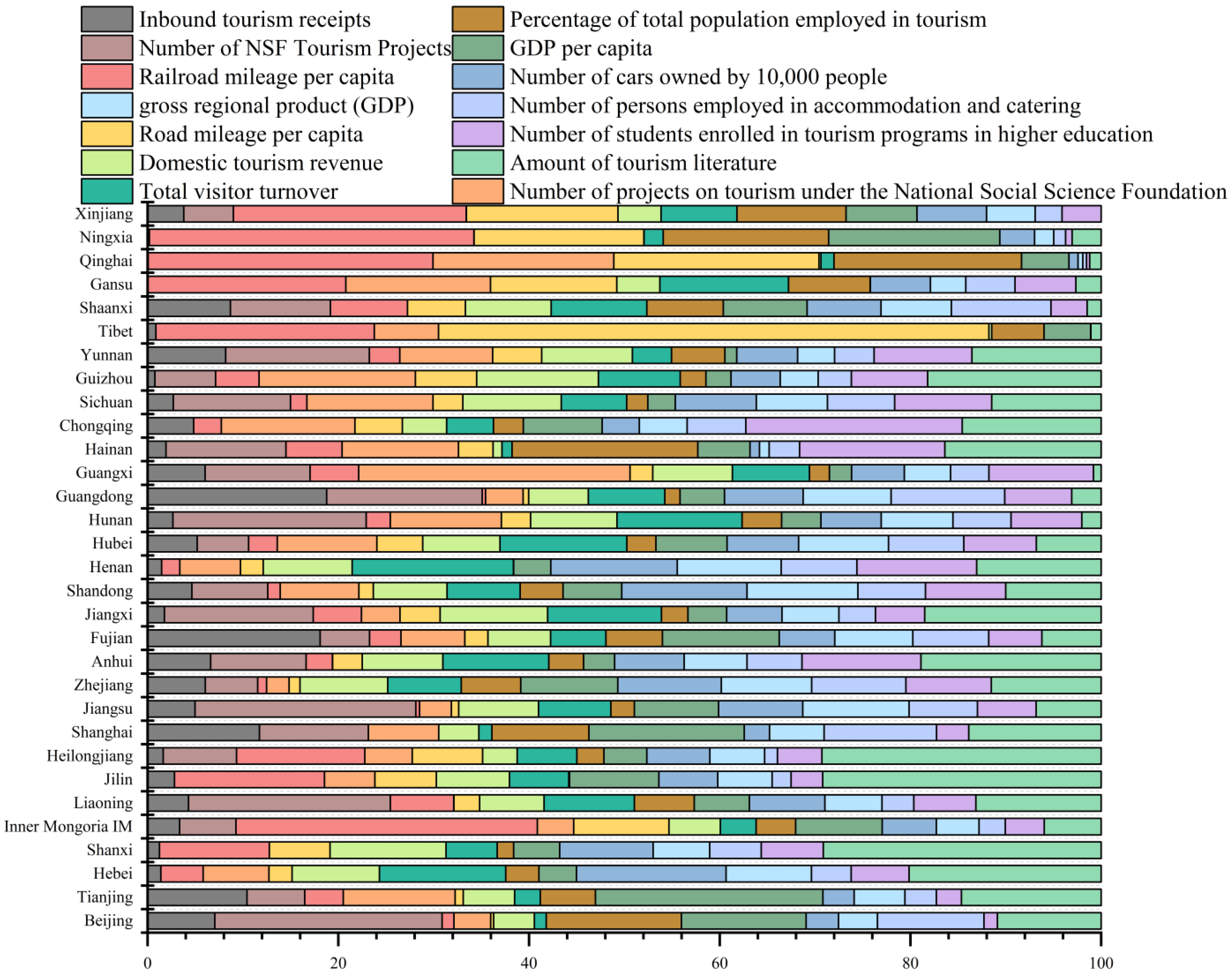
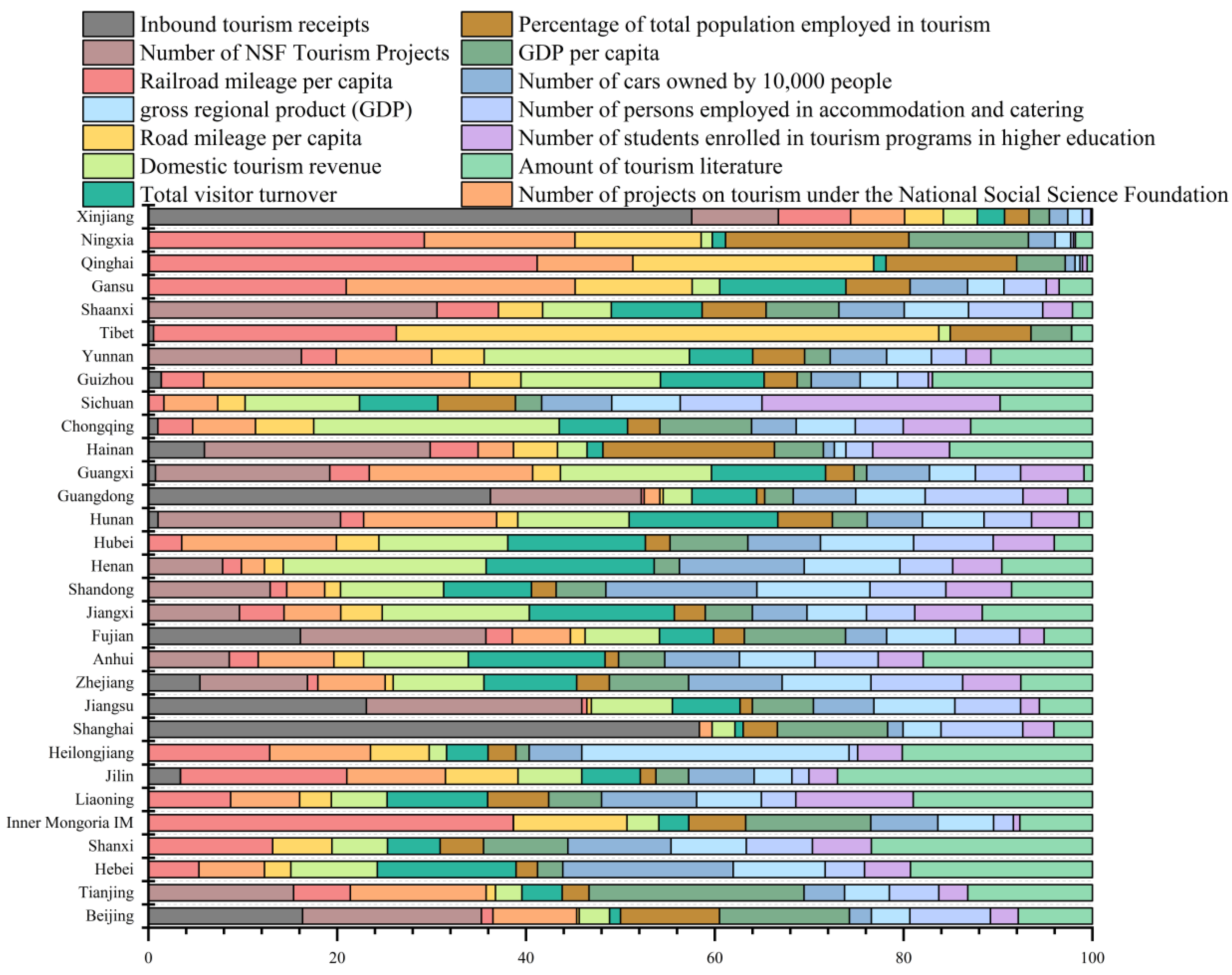
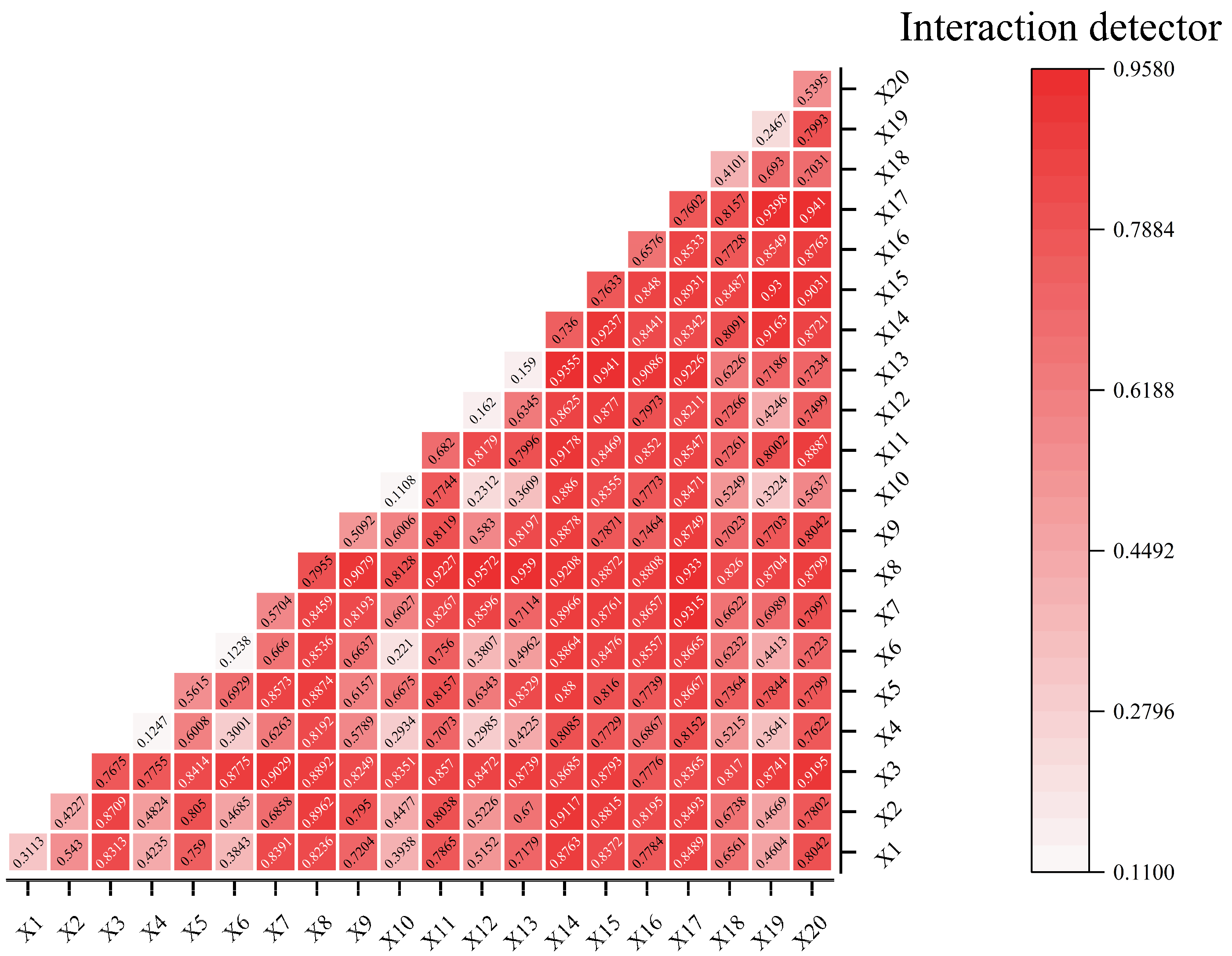

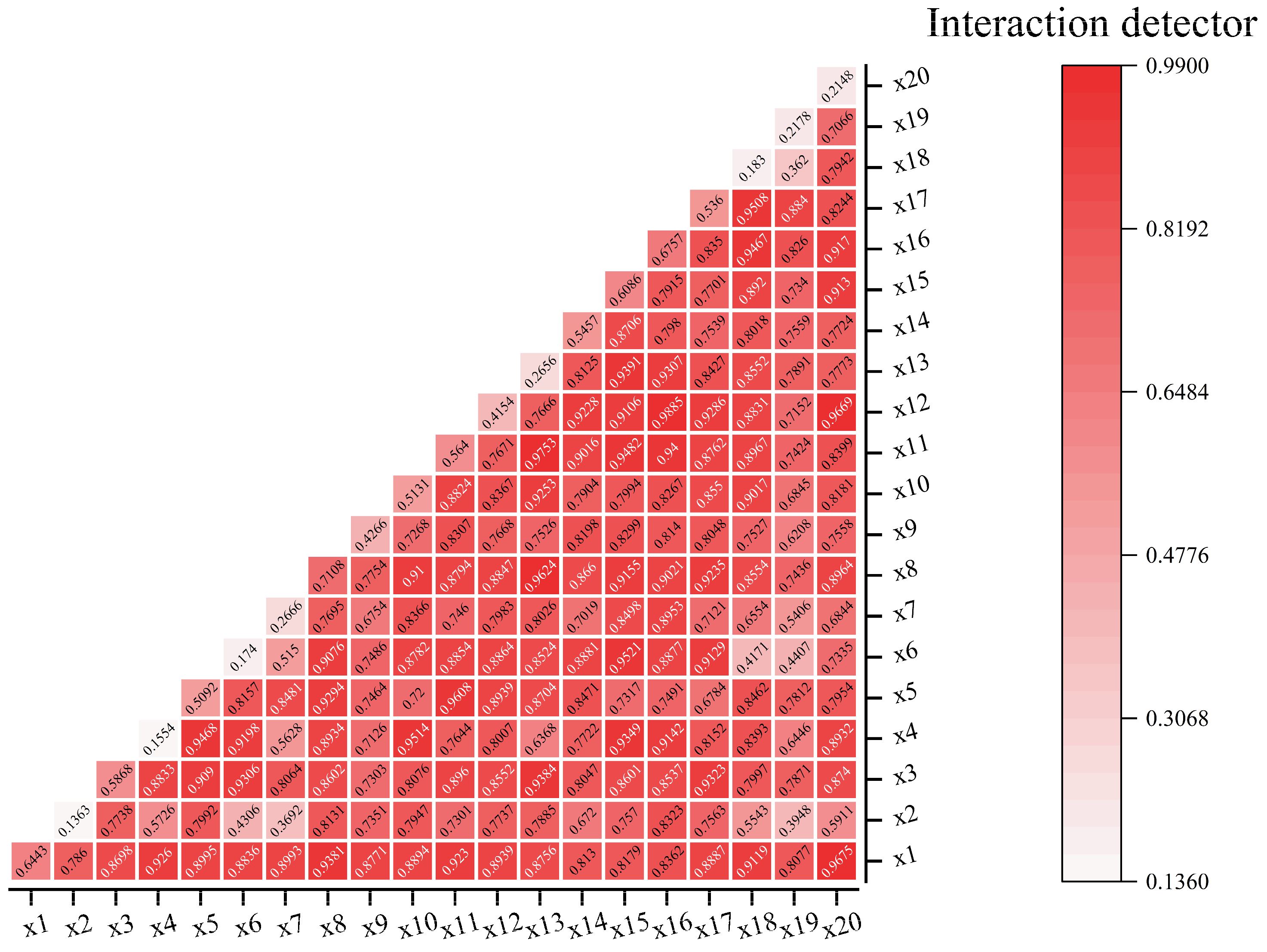
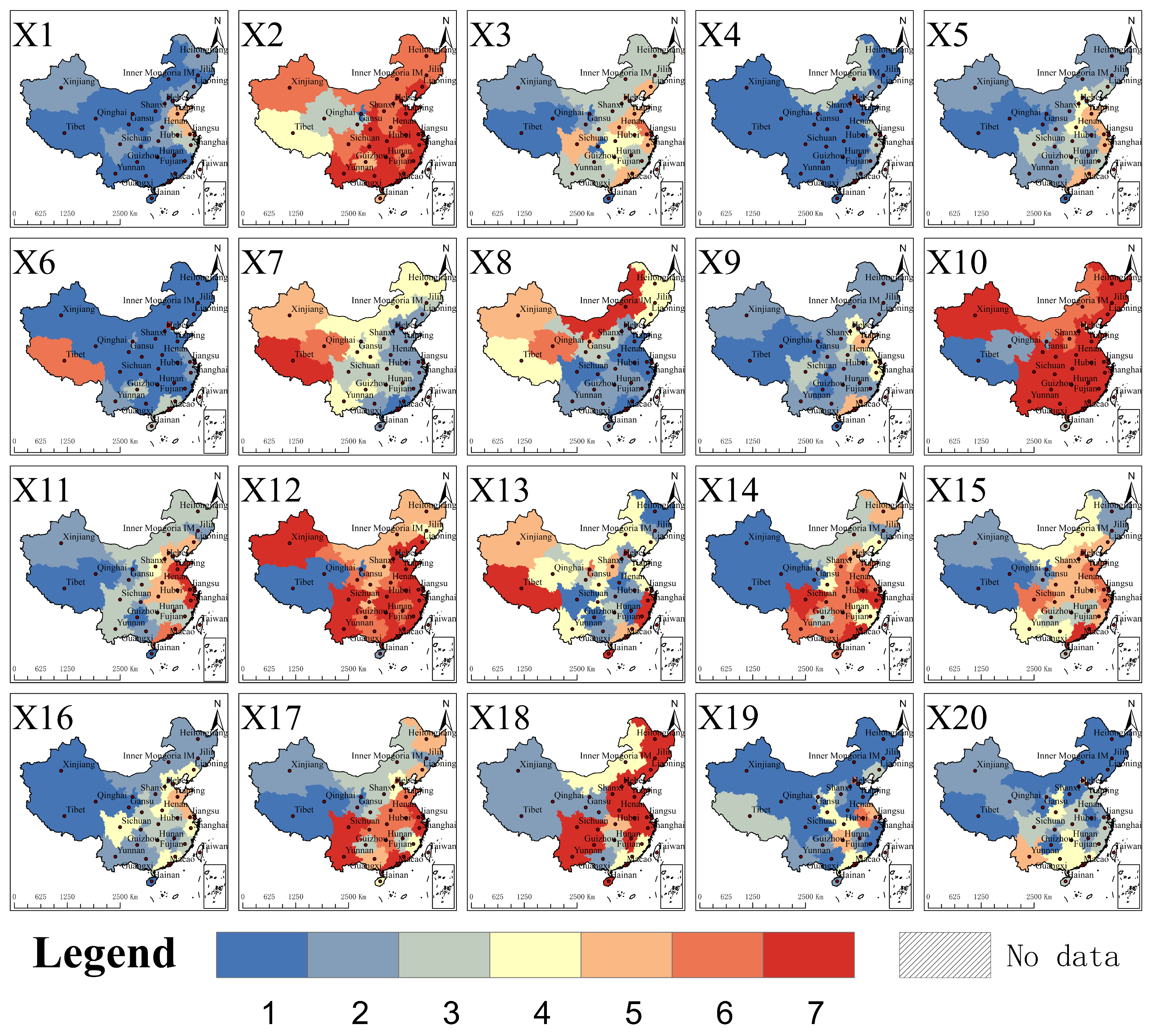
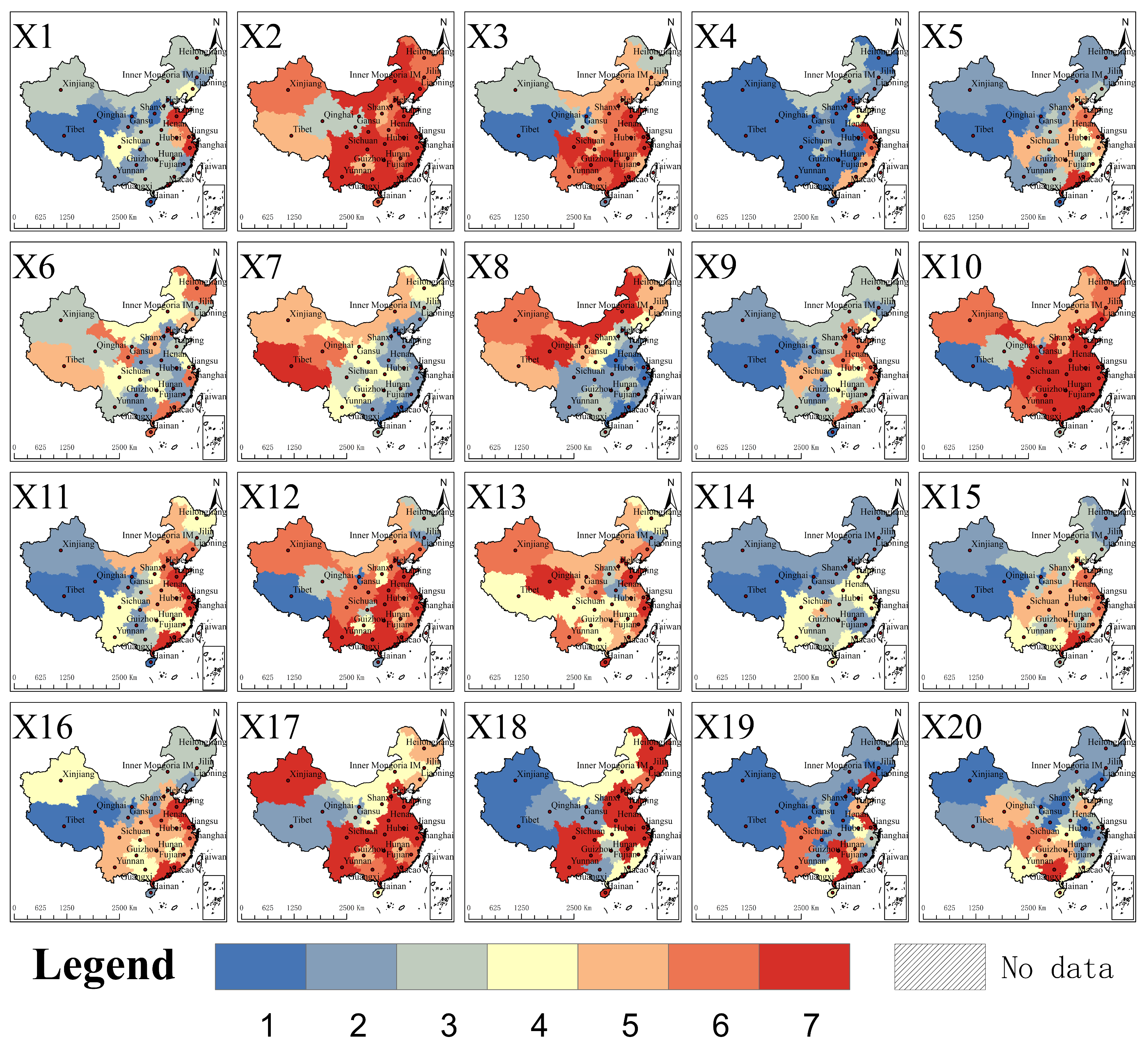

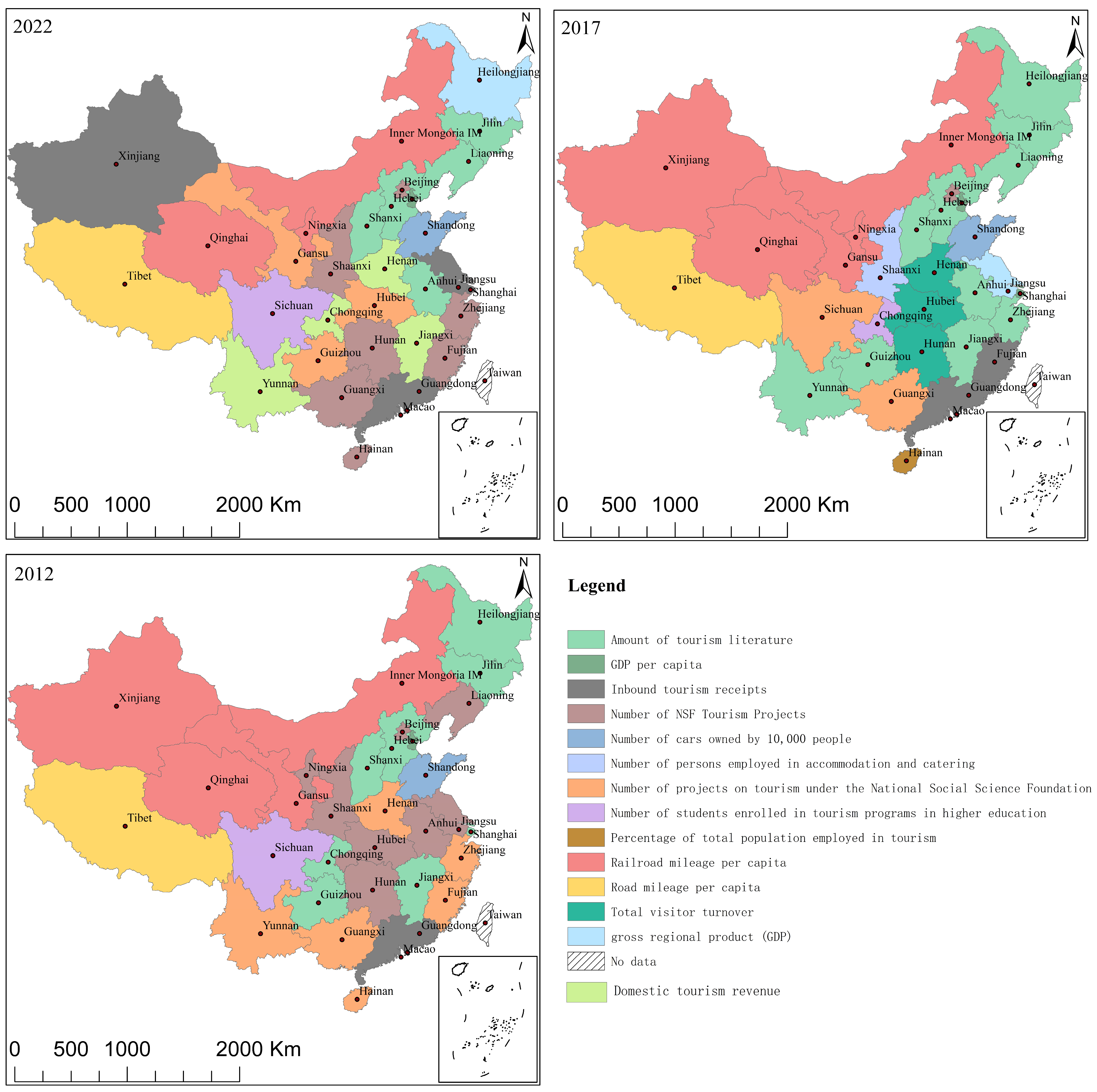
| Primary Indicators | Secondary Indicators | Third Indicators | Weight |
|---|---|---|---|
| Resistance Resilience | Tourism Resource Abundance | Number of A-Level Scenic Spots | 0.0562 |
| Tourism Economic Development Index | Inbound Tourism Revenue | 0.0337 | |
| Domestic Tourism Revenue | 0.0472 | ||
| Local Economic Foundation Index | Per Capita GDP | 0.0443 | |
| Gross Regional Product (GRP) | 0.0475 | ||
| Tertiary Industry’s Share of GDP | 0.0375 | ||
| Tourism Accessibility | Per Capita Road Mileage | 0.0356 | |
| Per Capita Railway Mileage | 0.0594 | ||
| Number of Automobiles per Ten Thousand People (Civilian Vehicles) | 0.0517 | ||
| Total Tourist Turnover | 0.038 | ||
| Recovery Resilience | Tourism Facility Index | Number of Travel Agencies | 0.0281 |
| Number of Star-Rated Hotels | 0.0347 | ||
| Tourism Workforce | Proportion of Tourism Employees to Total Population | 0.0429 | |
| Number of Students Enrolled in Tourism Programs at Higher Education Institutions | 0.0438 | ||
| Restructuring Resilience | Tourism Employment Population | Number of Employees in Accommodation and Catering | 0.0445 |
| Tourism Economic Reconstruction Capability | Investment in the Tertiary Industry | 0.1174 | |
| Development Resilience | Tourism Vocational Education Institutions | Number of Higher Education Institutions and Vocational Schools | 0.0793 |
| Innovative Achievements | Number of Tourism-Related Publications | 0.0715 | |
| Number of National Natural Science Foundation Tourism Projects | 0.0398 | ||
| Number of National Social Science Foundation Tourism Projects | 0.0469 |
| Code | Index | Q Statistic (2012) | Q Statistic (2017) | Q Statistic (2022) |
|---|---|---|---|---|
| X1 | Number of A-Level Scenic Spots | 0.311 | 0.396 | 0.644 |
| X2 | Inbound Tourism Revenue | 0.423 | 0.631 | 0.136 |
| X3 | Domestic Tourism Revenue | 0.768 | 0.813 | 0.587 |
| X4 | Per Capita GDP | 0.125 | 0.251 | 0.155 |
| X5 | Gross Regional Product (GRP) | 0.566 | 0.619 | 0.509 |
| X6 | Tertiary Industry’s Share of GDP | 0.124 | 0.299 | 0.174 |
| X7 | Per Capita Road Mileage | 0.57 | 0.542 | 0.267 |
| X8 | Per Capita Railway Mileage | 0.796 | 0.797 | 0.711 |
| X9 | Number of Automobiles per Ten Thousand People (Civilian Vehicles) | 0.509 | 0.753 | 0.427 |
| X10 | Total Tourist Turnover | 0.111 | 0.384 | 0.513 |
| X11 | Number of Travel Agencies | 0.682 | 0.700 | 0.564 |
| X12 | Number of Star-Rated Hotels | 0.162 | 0.440 | 0.415 |
| X13 | Proportion of Tourism Employees to Total Population | 0.159 | 0.060 | 0.266 |
| X14 | Number of Students Enrolled in Tourism Programs at Higher Education Institutions | 0.736 | 0.623 | 0.546 |
| X15 | Number of Employees in Accommodation and Catering | 0.763 | 0.753 | 0.609 |
| X16 | Investment in the Tertiary Industry | 0.658 | 0.644 | 0.676 |
| X17 | Number of Higher Education Institutions and Vocational Schools | 0.760 | 0.303 | 0.536 |
| X18 | Number of Tourism-Related Publications | 0.410 | 0.510 | 0.183 |
| X19 | Number of National Natural Science Foundation Tourism Projects | 0.246 | 0.760 | 0.218 |
| X20 | Number of National Social Science Foundation Tourism Projects | 0.539 | 0.449 | 0.215 |
Disclaimer/Publisher’s Note: The statements, opinions and data contained in all publications are solely those of the individual author(s) and contributor(s) and not of MDPI and/or the editor(s). MDPI and/or the editor(s) disclaim responsibility for any injury to people or property resulting from any ideas, methods, instructions or products referred to in the content. |
© 2024 by the authors. Licensee MDPI, Basel, Switzerland. This article is an open access article distributed under the terms and conditions of the Creative Commons Attribution (CC BY) license (https://creativecommons.org/licenses/by/4.0/).
Share and Cite
Sun, Y.; Lin, W.; Sun, M.; Chen, P. Spatiotemporal Evolution and Driving Forces of Tourism Economic Resilience in Chinese Provinces. Sustainability 2024, 16, 8091. https://doi.org/10.3390/su16188091
Sun Y, Lin W, Sun M, Chen P. Spatiotemporal Evolution and Driving Forces of Tourism Economic Resilience in Chinese Provinces. Sustainability. 2024; 16(18):8091. https://doi.org/10.3390/su16188091
Chicago/Turabian StyleSun, Yingyue, Wanying Lin, Mingyue Sun, and Peng Chen. 2024. "Spatiotemporal Evolution and Driving Forces of Tourism Economic Resilience in Chinese Provinces" Sustainability 16, no. 18: 8091. https://doi.org/10.3390/su16188091





